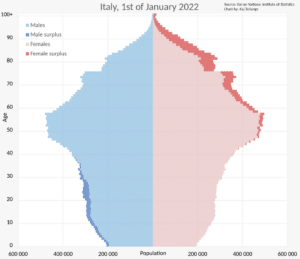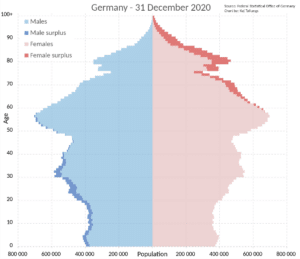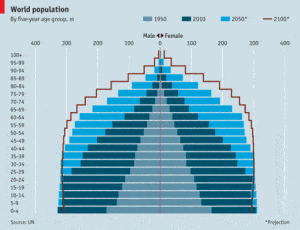We are heading for dire straits
Not only are we experiencing rising inflation and interest rates, but we are also recovering from a pandemic. Still, this pales in comparison with the coming demographic crisis, which might “end the world as we know it”. Below are the population pyramids of Italy and Germany, from 2020 and 2022 respectively. If we take a closer look, the bulges represent men and women currently in their fifties. As is evident, the current birthrate is far too low to replace the aforementioned men and women when they retire, as Italy and Germany have birthrates of 1.3 and 1.6 respectively. They will presumably have an acute shortage in their workforces in the coming years. They are far from alone. Japan will face a shortage of 11 million workers by 2040.


Perhaps, therefore, the German cabinet has approved a new legislative proposal to reform German immigration rules to help attract skilled labour from overseas. The draft law estimates that it could increase skilled labour migration from non-EU countries by around 60,000 per year, as Germany is already facing acute skills shortages in its labour market, with the number of vacant jobs reaching almost 2 million in the last quarter of 2022. Moreover, Germany has focused on attracting international students by offering more free undergraduate and graduate courses in English. They are currently one of the top five study destinations in the world, with around 350,000 international students in higher education. Around 28% of these students remain in the country after graduating to work there. They are becoming ever-more crucial to the country’s continued economic competitiveness, so much so that Germany is targeting to double that cohort of retained graduates by 2030.
This is not only happening in Europe. The fertility rate in Bangladesh has dropped to 2.1, India 2.2, China 1.7, United States 1.8, Russia 1.8 and Brazil 1.7. We are therefore transitioning from an expansive world demography to a stationary one by 2050, mainly held up by African countries. By the turn of this century, the world’s demography will be contractive, with very low birth rates, as shown in the diagram below. But beware, the decline has already started.
This will presumably have a huge impact on both education and the future job market. Although Oman still has a fertility rate of 2.9, the population will have stagnated by 2100. Keep in mind that Oman has a high proportion of expats. So as governments around the world design their plans to attract skilled workers, take all this into account when choosing your future education and careers, as although this might be positive for the environment, it’s not economically sustainable.

